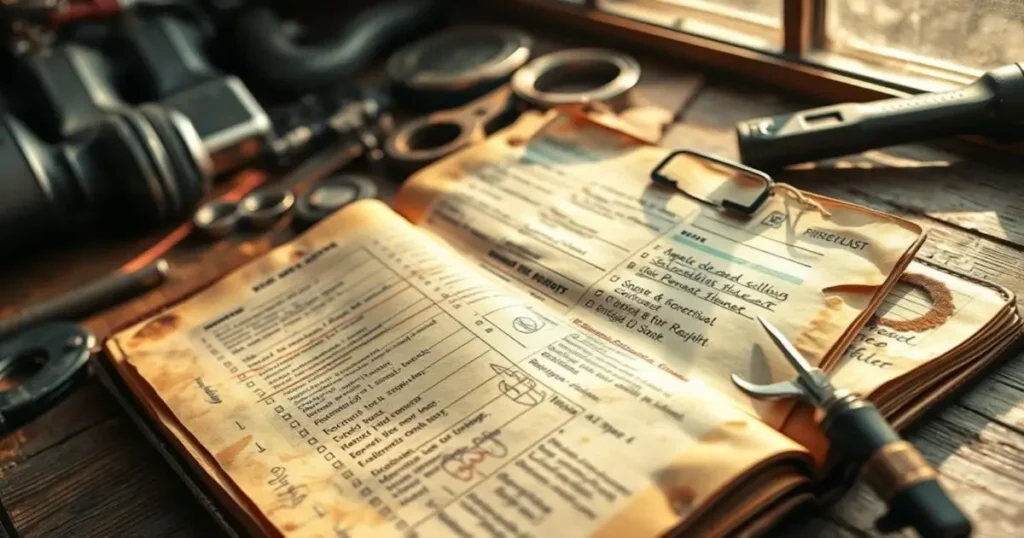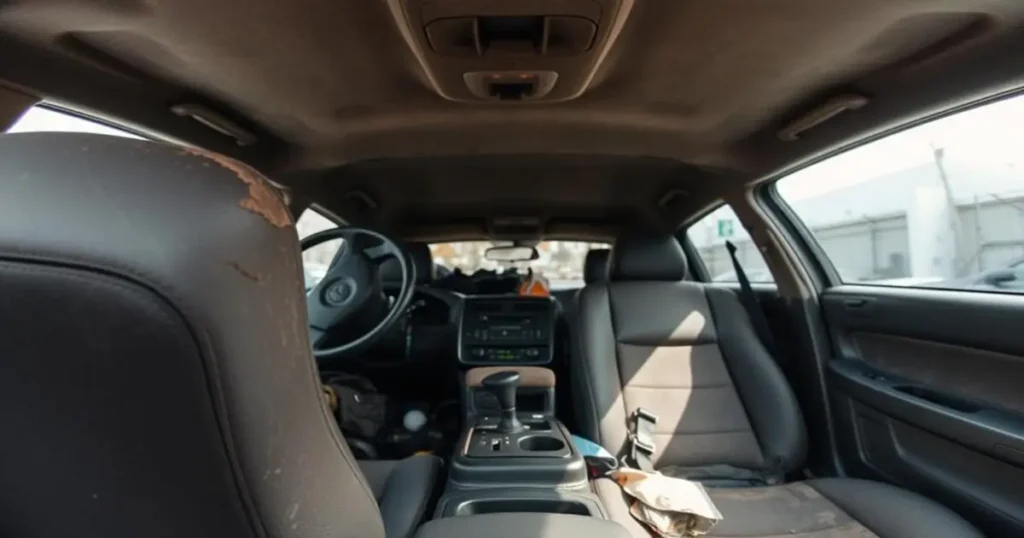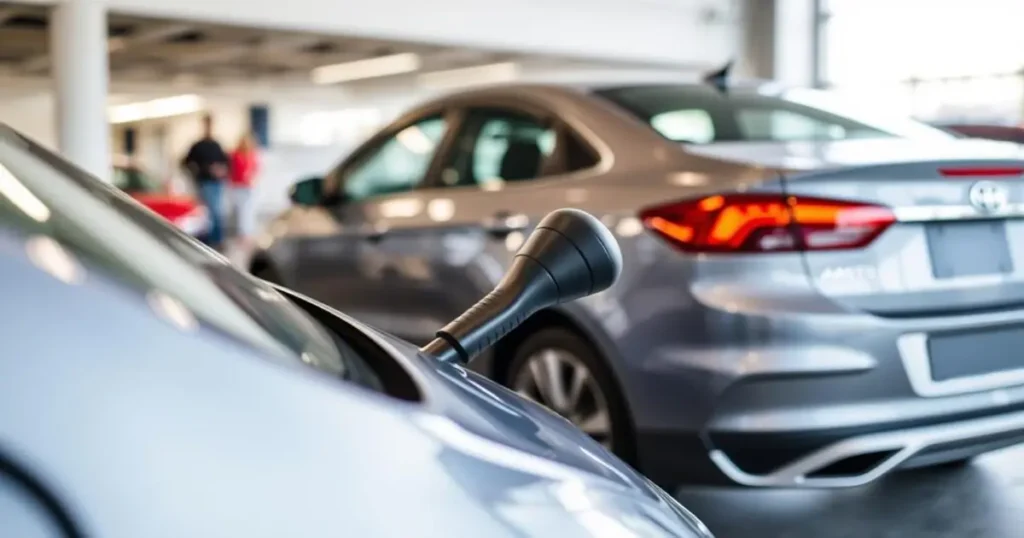Buying a used car can be a daunting task, especially for first-time buyers. With thousands of dollars on the line, it’s crucial to inspect the vehicle thoroughly to avoid costly mistakes.
Did you know that a significant number of used cars on the market have hidden problems that can lead to expensive repairs down the road? A thorough inspection by a trusted mechanic can reveal these issues, giving you the confidence to negotiate a better deal or walk away from a bad purchase.
When buying used, it’s not just about the car’s appearance; it’s about assessing its true condition and ensuring it has a reliable service history. In this guide, we’ll walk you through the process of inspecting a used car like a pro, helping you make a smarter purchasing decision.
Table of Contents
Why Thorough Used Car Inspection Matters
Purchasing a used vehicle without a proper inspection can lead to costly surprises. A thorough inspection is essential to uncover any hidden issues that could result in significant financial burdens down the road.
The Financial Stakes of Used Car Buying
Buying a used car can be a significant investment, and skipping a thorough inspection can lead to thousands of dollars in unexpected repair costs. According to Consumer Reports, hiring a mechanic to inspect a used vehicle can cost between $100 to $150. This fee includes a detailed report on the vehicle’s condition, any identified problems, and an estimate for repairs. Understanding the financial implications of buying a used car with hidden problems can help you make better decisions and properly budget for your purchase.
| Inspection Cost | Potential Repair Costs Without Inspection |
|---|---|
| $100-$150 | $1,000-$3,000+ |
Common Issues Hidden in Used Vehicles
Many used vehicles have undisclosed problems that only become apparent after purchase. Common hidden issues include previous accident damage, flood damage, and mechanical problems that sellers often try to conceal. A proper inspection can reveal these issues, giving you negotiating leverage to either reduce the price or request repairs before finalizing the deal. For instance, a vehicle history report can uncover if a car has been in a major accident or has existing recalls.
By understanding the true condition of a vehicle before purchase, you can determine whether a particular car is worth the asking price. This knowledge also helps in planning for future maintenance and potential repairs, ensuring that your used car purchase remains a sound investment.
How to Check a Used Car Before Buying: Pre-Inspection Research
Understanding how to check a used car before buying begins with gathering crucial information about the vehicle’s past. This pre-inspection research is vital in making an informed decision and avoiding potential pitfalls.
Vehicle History Reports: What They Reveal
One way to check out a used car before buying is to run its vehicle identification number (VIN) through a service like CARFAX or Kelley Blue Book. The VIN unlocks a vehicle history report that tells you the car’s ownership history, including past damage or if it’s been auctioned or stolen.
We’ll guide you through obtaining and interpreting vehicle history reports, which reveal crucial information about past accidents, title status, odometer readings, and ownership history. Understanding the vehicle’s history helps you identify potential red flags, such as multiple owners in a short period, accident repairs, or flood damage that might not be immediately visible.
Checking for Recalls and Safety Ratings
Checking the VIN with the National Highway Traffic Safety Administration (NHTSA) will tell you whether the car has had a safety recall by the manufacturer. If a recall pops up, you’ll want to ensure the issue has been taken care of before you purchase the car. Safety recalls and ratings provide critical information about potential issues and overall vehicle safety.
Researching Common Problems for Specific Models
We’ll demonstrate how to research model-specific problems and common issues by consulting owner forums, reliability ratings, and consumer advocacy sites like Consumer Reports. This research will help you understand the potential problems associated with the specific make and model you’re interested in, allowing you to make a more informed decision.
By cross-referencing information from multiple sources, you can build a complete picture of the vehicle’s past and likely future reliability.
Essential Questions to Ask the Seller
When buying a used car, it’s crucial to ask the seller the right questions to uncover the vehicle’s true condition and history. This step is vital in making an informed decision and avoiding potential pitfalls. By asking the right questions, you can gain insight into the car’s past, its current state, and potential future issues.
Ownership History and Reason for Selling
Understanding the ownership history and the reason for selling can provide valuable insights into the car’s condition. Ask the seller about the number of previous owners and their relationship with the vehicle. Inquire why the car is being sold, as this can indicate potential issues or needed repairs. A seller who is transparent about the car’s history is generally a good sign.
Maintenance Records and Recent Repairs
Maintenance records are essential documents that verify the proper care of the vehicle. Request to see service records and receipts for any repairs. Check if the dealer or previous owner has kept a log of maintenance activities, including oil changes, tire rotations, and other services. Recent repairs can indicate potential ongoing problems or, conversely, components that are unlikely to need replacement soon.
Accident History and Insurance Claims
Accident history and insurance claims can significantly impact the vehicle’s value and reliability. Tactfully ask the seller about any accidents or damage the car has sustained. Check if there have been any insurance claims filed for the vehicle. Be cautious of sellers who seem evasive or hesitant when discussing accident history.
| Category | Questions to Ask | Why It Matters |
|---|---|---|
| Ownership History | Number of previous owners, reason for selling | Indicates how well the car was maintained and potential issues |
| Maintenance Records | Service records, receipts for repairs | Verifies proper care and maintenance of the vehicle |
| Accident History | Accidents or damage, insurance claims | Affects the vehicle’s value and reliability |

Exterior Inspection Checklist
A meticulous exterior inspection can uncover hidden issues in a used car. When evaluating the exterior, it’s essential to be thorough and systematic in your approach.
Body Condition: Identifying Repairs and Damage
Start by examining the body condition of the vehicle. Look for signs of repairs or damage, such as dents, dings, or rust spots. Check the gaps between panels to ensure they are consistent and even. Any discrepancies could indicate previous repairs or potential issues with the vehicle’s alignment.
Inspect the paint for consistency across the vehicle. Different shades or textures could signify repainted areas, potentially hiding underlying damage. Make sure to check for any overspray on trim pieces or other non-painted components.
Paint Consistency and Panel Alignment
To further assess the vehicle’s condition, inspect the paint consistency and panel alignment. Check for any mismatches in paint color or finish, which could indicate repairs. Verify that all panels are properly aligned and that the gaps between them are uniform. Misaligned panels or uneven gaps can be a sign of poor-quality repairs or potential structural issues.
Tires, Glass, and Lights Assessment
Next, evaluate the condition of the tires, glass, and lights. Check the tires for uneven wear, which could indicate alignment or suspension problems. Inspect the glass for chips, cracks, or other damage that might require costly repairs. Ensure all lights, including headlights, taillights, and brake lights, are functioning correctly.
| Exterior Component | What to Check | Potential Issues |
|---|---|---|
| Body Condition | Dents, dings, rust spots, panel gaps | Previous repairs, alignment issues |
| Paint Consistency | Color, texture, overspray | Repainted areas, hidden damage |
| Tires | Uneven wear | Alignment or suspension problems |
| Glass and Lights | Chips, cracks, functionality | Costly repairs, safety issues |
By following this exterior inspection checklist, you can gain a comprehensive understanding of the used car’s condition and make a more informed purchasing decision.
Interior Inspection: What Not to Miss
To make an informed purchase, it’s essential to conduct a comprehensive interior inspection of a used car. This step helps identify potential issues that could affect the vehicle’s comfort, functionality, and overall value.
Dashboard Controls and Electronics
Start by testing the dashboard controls and electronics to ensure they’re functioning correctly. Check that all gauges, lights, and indicators are working properly. The air conditioning and heater should be tested in all settings to confirm they’re operating as expected. Additionally, verify that the audio system, including the radio, CD player, and speakers, is in good working condition. Make sure to test power features like windows, locks, and sunroof for proper functionality.

Upholstery and Interior Damage Signs
Inspect the upholstery for tears, stains, and overall condition of the seats. Check the carpeting and interior trim for damage or excessive wear. It’s also crucial to test seat adjustments and other moving parts to ensure they’re functioning correctly. Any signs of damage or wear could indicate a potential issue or needed repair, affecting the vehicle’s overall condition.
Signs of Water Damage and Odor Issues
Be aware of any moldy or musty smells, which could indicate water damage. Check for signs of moisture or water intrusion, as this can lead to ongoing electrical problems and health hazards from mold and mildew growth. Interior odors can reveal smoking history, pet ownership, or mechanical issues. Identifying the source of any unusual smells is crucial in assessing the vehicle’s overall condition and potential for future problems.
Under the Hood: Mechanical Inspection Tips
To ensure you’re buying a reliable used car, a detailed under-the-hood inspection is essential. This step can help you identify potential issues that could lead to costly repairs down the line.
Engine Condition and Fluid Checks
Checking the engine condition involves inspecting for leaks, odd noises, and the condition of belts and hoses. It’s crucial to check the engine oil condition and level to identify potential internal engine problems or oil leaks. Make sure to inspect all vital fluids, including transmission fluid, coolant, brake fluid, and power steering fluid, for proper levels, condition, and signs of contamination.
Here’s a breakdown of what to check for in the engine fluids:
| Fluid | Check for |
|---|---|
| Engine Oil | Level, color, and consistency. Dark or dirty oil may indicate neglect. |
| Transmission Fluid | Level and color. Red or pink is normal; dark or black may indicate contamination. |
| Coolant | Level and condition. Check for leaks or corrosion around the radiator. |
| Brake Fluid | Level. Low levels could indicate worn brake pads or leaks. |
| Power Steering Fluid | Level. Check for leaks or contamination. |
Battery, Belts, and Hoses Assessment
The battery condition is another critical aspect. Check for corrosion on the terminals and ensure it holds a charge. Inspect the belts and hoses for cracks, wear, and proper tension. Worn or damaged belts and hoses can lead to unexpected breakdowns.
Transmission and Exhaust System Evaluation
Finally, evaluating the transmission and exhaust system is vital. Check the transmission fluid condition and shifting performance to identify potential issues. Inspect the exhaust system for leaks or damage, which can affect performance and safety.
By following these mechanical inspection tips, you can gain a better understanding of the used car’s condition and make a more informed purchase decision.
Test Drive Like a Pro
The test drive is your opportunity to put the car through its paces and identify any problems that may not be immediately visible. During this critical phase, you’ll be able to assess the vehicle’s overall performance and detect potential issues. We’ll guide you through a comprehensive test drive to reveal hidden problems.
Engine Performance and Acceleration
When you test drive a used car, pay close attention to its engine performance and acceleration. Ensure the engine responds smoothly to acceleration without hesitation or unusual noises. Check if the car easily merges onto the interstate and accelerates smoothly.
Listen for any unusual sounds coming from the engine, as they could indicate mechanical problems. Verify that the vehicle gets up to operating temperature without overheating issues. A well-performing engine is crucial for a smooth driving experience.
Braking, Steering, and Suspension
As you drive the car, evaluate its braking performance, including stopping distance and pedal feel. Be aware of any unusual noises or vibrations when applying the brakes, as these could signal worn brake components. Make sure the car brakes smoothly and evenly.
Additionally, test the steering and suspension by driving on various road surfaces. Listen for creaks, pops, or roaring sounds that might indicate worn or misaligned components. Check the condition of the tires for even wear, as uneven wear can signal suspension or alignment issues.
Transmission Operation and Unusual Noises
During your test drive, pay attention to the transmission’s operation. Check for smooth shifting through all gears and listen for any unusual noises or vibrations. Rough transmission shifts are a red flag, indicating potential problems.
Also, be attentive to any unusual sounds coming from the brakes, suspension, or other parts of the vehicle. Identifying these issues during the test drive can save you from costly repairs down the road. By carefully evaluating the car’s performance, you’ll be better equipped to make an informed purchasing decision.
Professional Mechanic Inspection: Worth the Investment

One of the smartest investments you can make when buying a used car is hiring a professional mechanic for an inspection. This step can potentially save you thousands of dollars by identifying major issues before you finalize the purchase.
Finding a Qualified Inspector
To get an unbiased evaluation, it’s crucial to find a qualified, independent inspector who specializes in pre-purchase inspections. You can search online for local mechanics who offer this service, or consider services like AiM Certify, which provides 150-point inspection reports. Some auto service chains like PepBoys and Firestone also offer used car inspections.
What a Professional Inspection Covers
A comprehensive professional inspection includes a thorough examination of the vehicle, covering aspects such as computer diagnostics, undercarriage examination, and specialized tests that you might not be able to perform during a personal inspection. This detailed assessment can reveal subtle engine problems, transmission wear, and electrical system faults that could lead to costly repairs down the line.
Using Inspection Results for Negotiation
If the inspection report uncovers significant issues, you can use this information to negotiate the price of the used vehicle. You might be able to request repairs from the seller, ask for a reduction in price, or even decide to walk away from the deal. Understanding how to interpret the inspection report is key to making informed decisions about your purchase, considering factors like safety concerns, repair costs, and long-term reliability implications.
Investing in a professional mechanic inspection not only provides peace of mind but also empowers you to make a more informed decision when buying a used car. With the potential to save thousands in future repairs, this investment is well worth considering.
Conclusion
With the knowledge gained from our guide, you’re now equipped to inspect a used car like a professional. Understanding the complete inspection process, from research through test drive to professional evaluation, gives you confidence when dealing with dealers or private sellers.
The most critical inspection points to remember include checking the vehicle’s condition, looking for signs of rust, and reviewing maintenance records. Proper inspection techniques can save you thousands in repair costs and help you negotiate better prices based on the vehicle’s true condition.
The information gathered during inspection helps you make informed decisions about extended warranties, service contracts, and insurance coverage. Understanding the relationship between vehicle condition, maintenance history, and long-term reliability helps you select the best used car for your needs and budget.
When making the final purchase decision, balance your inspection findings with other factors like price, features, and personal preferences. Remember that taking your time during the inspection process is crucial to avoiding rushed decisions that lead to buyer’s remorse and unexpected expenses.
By following this comprehensive guide, you’ll be able to make sure you’re getting a reliable vehicle that meets your needs. Whether you’re buying from a dealer or a private seller, your newfound knowledge will give you the confidence to make a smart purchase.